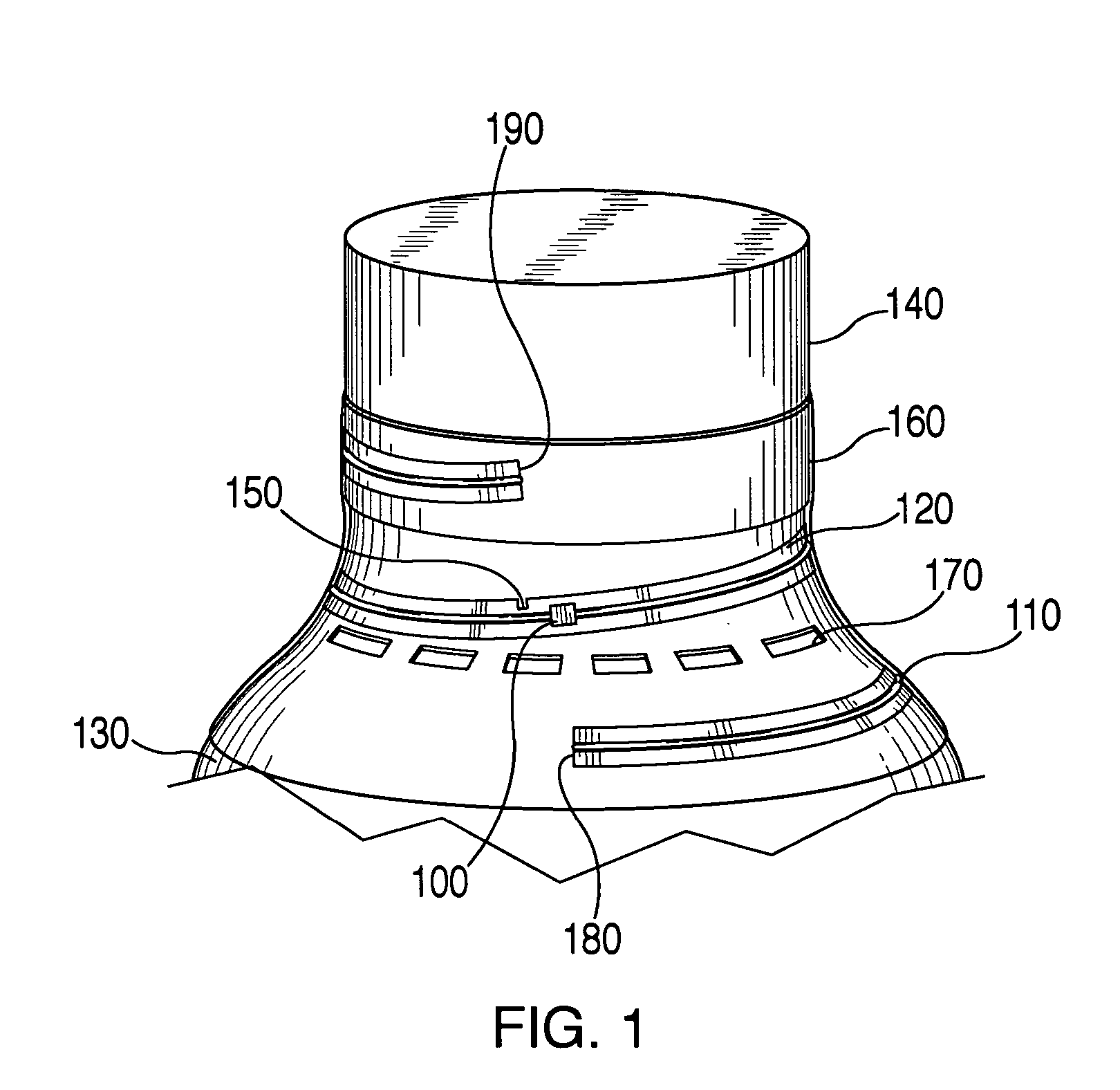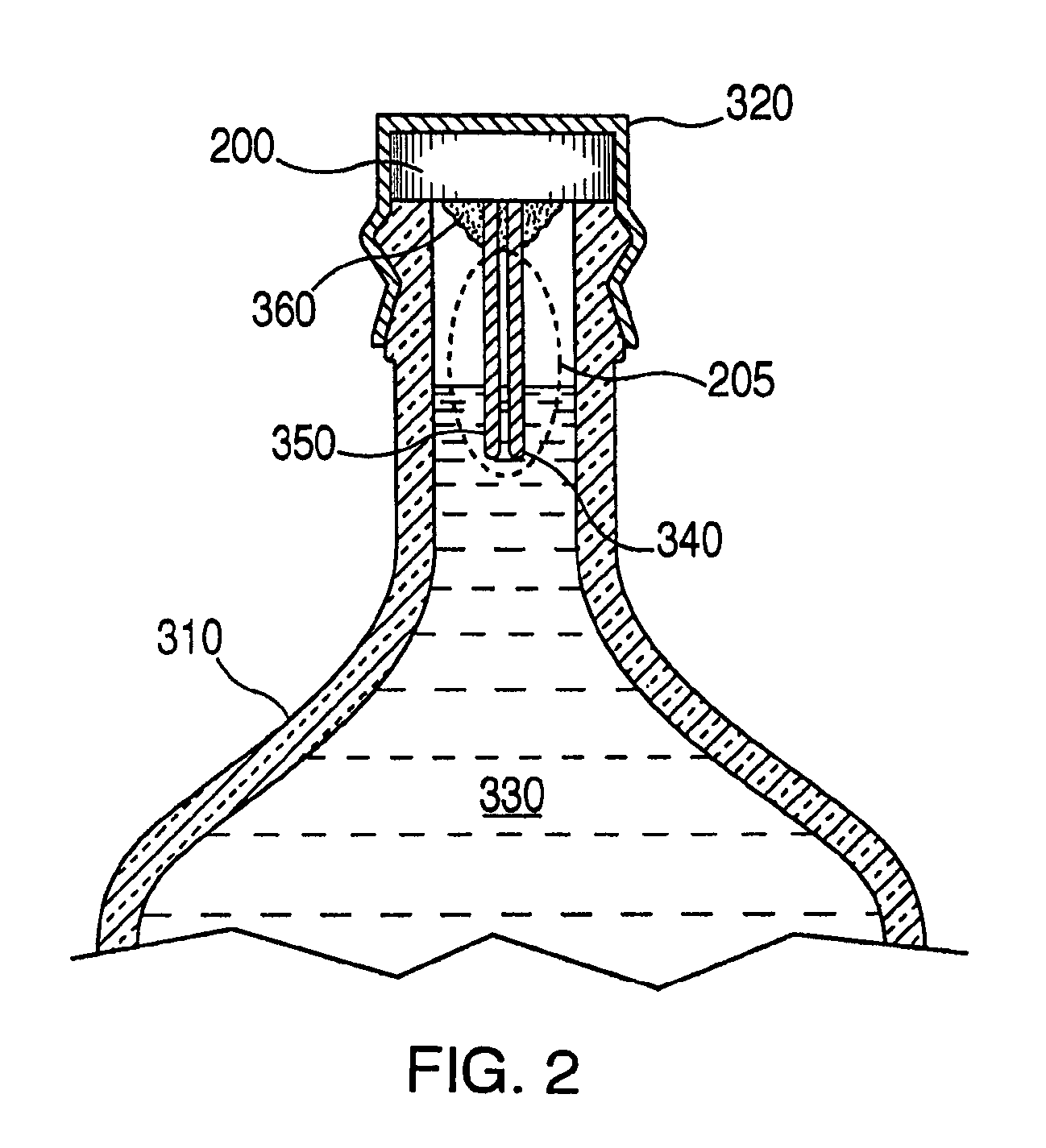Apparatus and method for detecting tampering with containers and preventing counterfeiting thereof
a technology of apparatus and containers, applied in the field of apparatus and methods for detecting tampering with containers and preventing counterfeiting thereof, can solve the problems of counterfeit goods, large loss of wine and spirits industry revenue, and proliferation of counterfeit goods
- Summary
- Abstract
- Description
- Claims
- Application Information
AI Technical Summary
Benefits of technology
Problems solved by technology
Method used
Image
Examples
first embodiment
[0017] The present invention relates to an apparatus for detecting counterfeit or altered containers. FIG. 1 shows a side view of the apparatus according to the present invention. In this embodiment, a radio frequency identification (“RFID”) chip 100 is connected to an antenna 110 having predetermined transmission characteristics controlled by the length thereof so that the RFID chip 100 may respond to radio frequency signals sent from another device known as an interrogator. Preferably, the RFID chip 100 is the so-called “mu-chip” manufactured and sold by Hitachi, but could also constitute any similar product sold by other manufacturers, including but not limited to products from Nippon Electric in Japan and Intermec in the U.S. The RFID chip 100 is a radio frequency back-scatter transceiver that transmits a stored identification code upon receipt of a command to transmit. Preferably, RFID chip 100 is passive, i.e. it uses the received signal to power itself. As one of skill in the...
second embodiment
[0020]FIGS. 2 and 3 depict the present invention, and, in particular, show how electronic assembly 200 of FIGS. 4 and 5 is integrated into a cap 320 that seals a container 310.
[0021]FIG. 2 is a side view of shows the electronic assembly 200 of FIGS. 4 and 5 integrated into a cap 320 and attached to a container 310. Probe 205 is formed from two rods 340 and 350, which are preferably substantially parallel to each other and conductive—preferably made of stainless steel. Rods 340 and 350 protrude from a point that is substantially in the center of the cap 320. An adhesive 360 is preferably placed around the probe 205, in order to form a liquid tight seal ensuring that the other portions of the electronic assembly 200 are protected from contamination. The cap 320 seals the container 310 filled with contents 330, and, when sealed, the bottom portions of the rods 340 and 350 extend into the contents 330. The two rods 340 and 350 are sized to a length so that their end portions remain in c...
PUM
 Login to View More
Login to View More Abstract
Description
Claims
Application Information
 Login to View More
Login to View More - R&D
- Intellectual Property
- Life Sciences
- Materials
- Tech Scout
- Unparalleled Data Quality
- Higher Quality Content
- 60% Fewer Hallucinations
Browse by: Latest US Patents, China's latest patents, Technical Efficacy Thesaurus, Application Domain, Technology Topic, Popular Technical Reports.
© 2025 PatSnap. All rights reserved.Legal|Privacy policy|Modern Slavery Act Transparency Statement|Sitemap|About US| Contact US: help@patsnap.com



